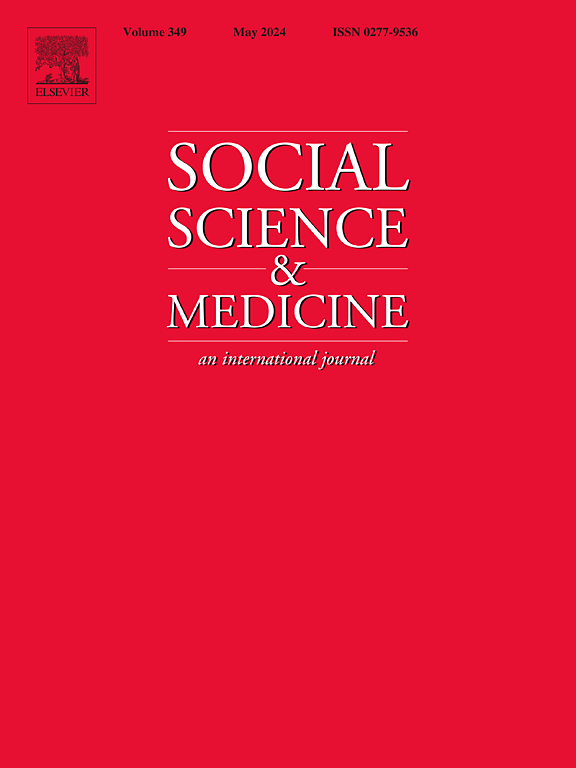获得性脊髓损伤患者之间的距离和不信任
IF 4.9
2区 医学
Q1 PUBLIC, ENVIRONMENTAL & OCCUPATIONAL HEALTH
引用次数: 0
摘要
本研究探讨了获得性脊髓损伤个体如何在同伴群体中维持、竞争和消除界限,特别关注疏远和诋毁他人的作用。通过参与者观察、访谈、社交媒体、众筹活动、新闻报道、政府政策、报告和相关研究,开展了为期26个月的民族志研究。借鉴符号边界和耻辱感理论,我们理论化了比较语境如何影响个人如何被同龄人群体包括或排除在外。我们发现,非残疾人与脊髓损伤患者的关系方式影响了脊髓损伤同龄人之间象征性边界的协商方式。轮椅使用者通常被认为是无助的,而那些能走路的人是大多数普通路人看不见的,因此不被认为是残疾人。这些观念影响了脊髓损伤人群的内部定义。因此,他们在协商群体成员资格时采取疏远或抹黑的方式,这构成了“真正的伤害”,在某些情况下,他们把别人排除在自己的群体之外。这是一个高度敏感的话题;然而,否认这种进程的存在可能会限制人们在被排除在外时采取行动的机会。本文章由计算机程序翻译,如有差异,请以英文原文为准。
Distancing and discrediting among persons with an acquired spinal cord injury
This study examines how individuals with acquired spinal cord injury maintain, contest, and dissolve boundaries within their peer community, with a particular focus on the roles of distancing and discrediting others. Carrying out a 26-month ethnography generated data from participant observation, interviews, social media, crowdfunding initiatives, news stories, government policies, reports, and related research. Drawing on theories of symbolic boundaries and stigmas, we theorised how the comparative context influences how individuals can be included or excluded from peer groups. We found that the ways non-disabled relate to people with a spinal cord injury influence the ways symbolic boundaries are negotiated among peers with a spinal cord injury. Wheelchair users are often perceived as helpless and those who can walk are invisible to most common passersby and thereby not recognised as persons with disability. These perceptions influence internal definitions within the group of people with spinal cord injuries. Consequently, they engage in processes of distancing or discrediting to negotiate group membership, what constitutes a “real injury”, and in some cases, exclude people from their group. This is a highly sensitive subject; however, denying the presence of such processes could limit opportunities for action when people are excluded.
求助全文
通过发布文献求助,成功后即可免费获取论文全文。
去求助
来源期刊

Social Science & Medicine
PUBLIC, ENVIRONMENTAL & OCCUPATIONAL HEALTH-
CiteScore
9.10
自引率
5.60%
发文量
762
审稿时长
38 days
期刊介绍:
Social Science & Medicine provides an international and interdisciplinary forum for the dissemination of social science research on health. We publish original research articles (both empirical and theoretical), reviews, position papers and commentaries on health issues, to inform current research, policy and practice in all areas of common interest to social scientists, health practitioners, and policy makers. The journal publishes material relevant to any aspect of health from a wide range of social science disciplines (anthropology, economics, epidemiology, geography, policy, psychology, and sociology), and material relevant to the social sciences from any of the professions concerned with physical and mental health, health care, clinical practice, and health policy and organization. We encourage material which is of general interest to an international readership.
 求助内容:
求助内容: 应助结果提醒方式:
应助结果提醒方式:


